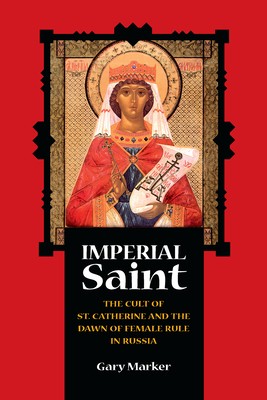
- We will send in 10–14 business days.
- Author: Gary Marker
- Publisher: Northern Illinois University Press
- ISBN-10: 087580666X
- ISBN-13: 9780875806662
- Format: 15.2 x 22.9 x 2.5 cm, softcover
- Language: English
- SAVE -10% with code: EXTRA
Reviews
Description
Historian Gary Marker traces the Russian veneration of St. Catherine of Alexandria from its beginnings in Kievan times through the onset of female rulership in the eighteenth century. Two narratives emerge. The first focuses on St. Catherine within Christendom and, specifically, within Russia. The second shifts attention to the second wife of Peter the Great, Catherine I, who became Russia's first crowned female ruler. Marker then explores the evolution of divine queenship and the Catherine cult through the reigns of Elizabeth and Catherine the Great.
Russia's cult of St. Catherine diverged from the veneration of Catherine in Western Christendom in several ways, particularly in the evolution of the Bride of Christ theme. Also, while St. Catherine became a figure of personal intercession in the West, her persona in Russia took a different path, one that valorized her regal and masculine qualities--attributes that supported her emerging role as a patron saint of the women of the ruling family.
The intersection of gender, power, and religion is a central theme of this study. Under Catherine I, the ruler's identification with St. Catherine, her name-day saint, became critical. In ever-widening cascades of public ceremonies, Catherine was lauded as her saint's living image, an affinity that ultimately provided the basis for establishing a distinctly female path to divinely chosen leadership.
Imperial Saint draws upon extensive and often rare sources, including service books, saints' lives, sermons, public ceremonies, pilgrims' accounts, laws, and personal correspondence. It also calls attention to icons, iconostases, fireworks, processionals, and other visual evidence. For readers interested in saints, cults, the ritualization of power, and the relationship between gender and religion--as well as scholars who study St. Catherine--this stimulating study offers valuable insights.
EXTRA 10 % discount with code: EXTRA
The promotion ends in 18d.20:24:26
The discount code is valid when purchasing from 10 €. Discounts do not stack.
- Author: Gary Marker
- Publisher: Northern Illinois University Press
- ISBN-10: 087580666X
- ISBN-13: 9780875806662
- Format: 15.2 x 22.9 x 2.5 cm, softcover
- Language: English English
Historian Gary Marker traces the Russian veneration of St. Catherine of Alexandria from its beginnings in Kievan times through the onset of female rulership in the eighteenth century. Two narratives emerge. The first focuses on St. Catherine within Christendom and, specifically, within Russia. The second shifts attention to the second wife of Peter the Great, Catherine I, who became Russia's first crowned female ruler. Marker then explores the evolution of divine queenship and the Catherine cult through the reigns of Elizabeth and Catherine the Great.
Russia's cult of St. Catherine diverged from the veneration of Catherine in Western Christendom in several ways, particularly in the evolution of the Bride of Christ theme. Also, while St. Catherine became a figure of personal intercession in the West, her persona in Russia took a different path, one that valorized her regal and masculine qualities--attributes that supported her emerging role as a patron saint of the women of the ruling family.
The intersection of gender, power, and religion is a central theme of this study. Under Catherine I, the ruler's identification with St. Catherine, her name-day saint, became critical. In ever-widening cascades of public ceremonies, Catherine was lauded as her saint's living image, an affinity that ultimately provided the basis for establishing a distinctly female path to divinely chosen leadership.
Imperial Saint draws upon extensive and often rare sources, including service books, saints' lives, sermons, public ceremonies, pilgrims' accounts, laws, and personal correspondence. It also calls attention to icons, iconostases, fireworks, processionals, and other visual evidence. For readers interested in saints, cults, the ritualization of power, and the relationship between gender and religion--as well as scholars who study St. Catherine--this stimulating study offers valuable insights.


Reviews